Air & Energy Report Card
The homes, buildings, cars, equipment, and businesses – large and small – that exist in Salt Lake City all put out varying levels of pollution. These emissions contribute to local air pollution and to our community’s carbon footprint. The good news is there are many ways to reduce emissions. The goals and strategies outlined here not only clear the air and reduce carbon pollution, they enhance livability and improve quality of life.
2021 Goals
See below for more information on these key priorities, as well as other important initiatives the City is working on to reduce air pollution and propel our community toward a low-carbon future.
IN PROGRESS: Propose to the City Council an ordinance that requires all new buildings funded by City money to be emission-free by 2023.
Array
(
[0] => description
)
COMPLETE: In December 2021, Salt Lake City’s Redevelopment Agency (RDA) Board passed a significant new Sustainability Policy that will require all new buildings that receive RDA funding to be highly energy efficient and to operate without on-site fossil fuel combustion.
Because buildings are a significant source of both local air pollution and carbon emissions, this policy is a bold measure to reduce pollution from the source.
To achieve a higher level of sustainability, the policy also outlines additional net zero guidelines for projects utilizing specific RDA financing programs. The construction and rehabilitation of on- and off-site net zero energy buildings – where 100% of the building’s electricity usage is supplied by renewable energy – are either required or incentivized, depending on the source of the RDA funding being sought
The RDA, in partnership with the Sustainability Department and local non-profit Utah Clean Energy, convened three stakeholder roundtable sessions in 2021 to collect feedback on the proposed policies. Over the course of the year, the policies were refined after stakeholder and RDA Advisory Council and Board feedback. The RDA Board (comprised of the Salt Lake City Council) voted in December 2021 to implement the changes. Learn more here.
IN PROGRESS: Salt Lake City is also updating its ordinance to specify that all new construction or major renovation of City buildings over 10,000 square feet shall be evaluated, and where practicable, designed and constructed, to be all-electric (i.e. without on-site fossil fuel combustion). Net Zero and LEED Gold standards are already part of city policy and ordinance. This update is expected in early 2022.
Array
(
[0] => image_bg
)

Array
(
[0] => image_bg
)
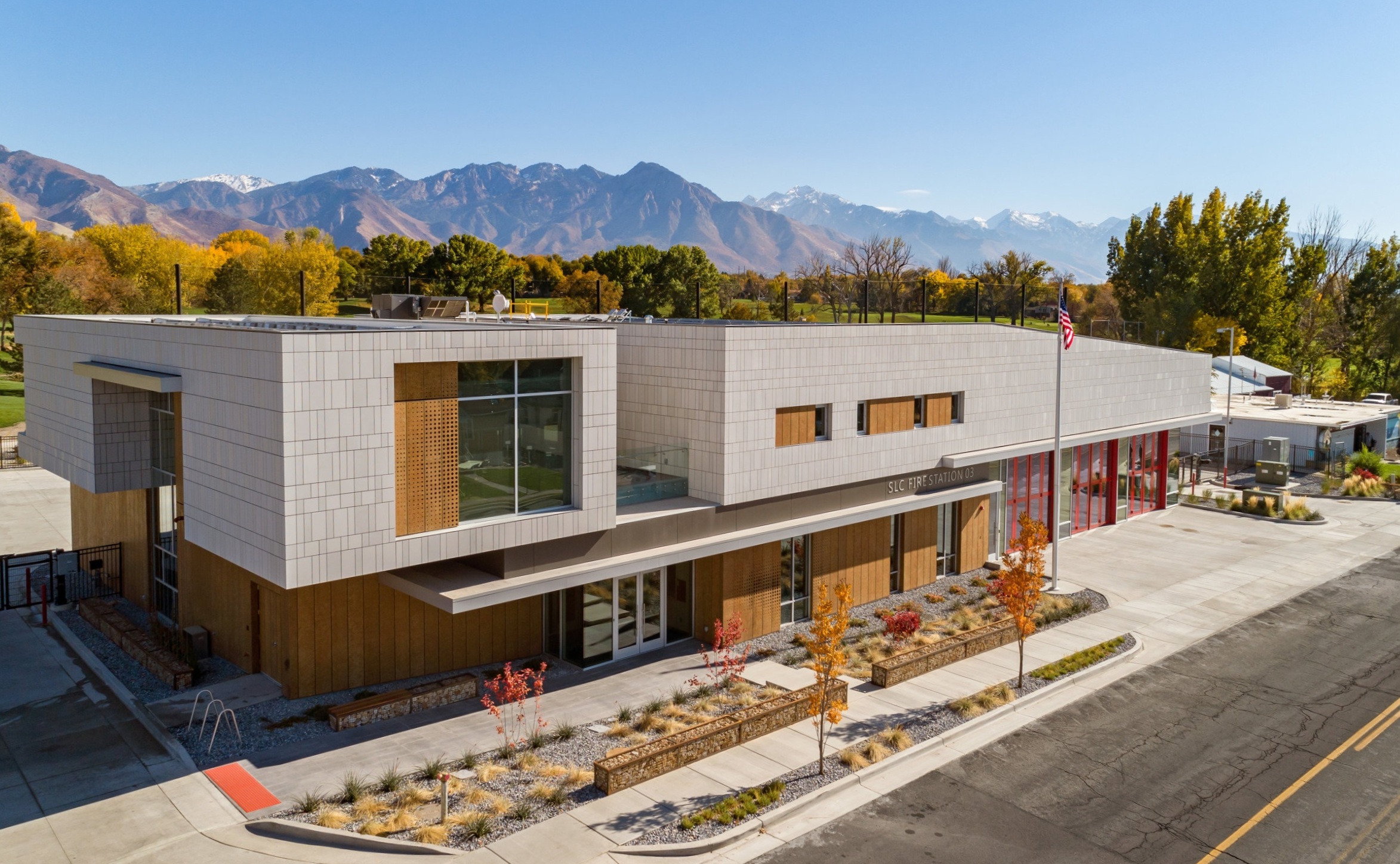
COMPLETE: Adopt hybrid work-from-home model throughout City departments to reduce emissions and lessen our impact on air quality, as well as increasing employee satisfaction.
Array
(
[0] => description
)
Salt Lake City’s Human Resources Department created new guidelines to encourage remote work. Survey results from employees in fall of 2020 indicated a strong preference for the flexibility to work from home.
Salt Lake City is implementing an Air Quality Action Plan to recommend that eligible City employees work remotely or modify their commutes on State Department of Air Quality Mandatory Action Days. This Plan will improve air quality by reducing vehicle travel on days when air quality is predicted to reach or exceed unhealthy levels of air pollution.
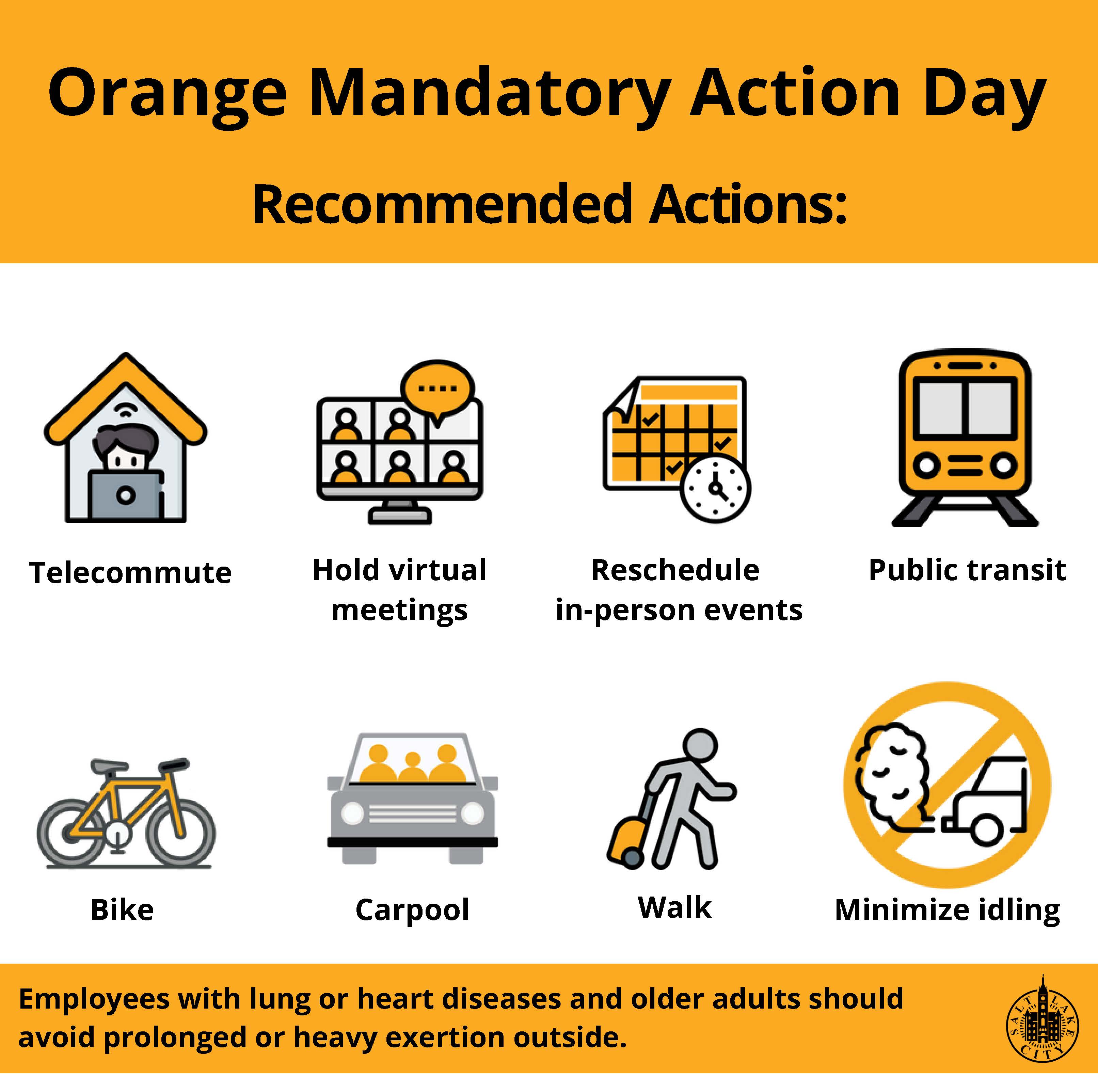
COMPLETE: Measure the impacts and effectiveness of City Fleet emissions, energy, and efficiency goals and re-tool if needed. Track progress on a re-launched City Sustainability Dashboard.
Array
(
[0] => description
)
As part of Salt Lake City’s ongoing efforts to improve local air quality and reduce carbon emissions, Mayor Mendenhall and the City Council passed the Joint Electrified Transportation Resolution in Dec. 2020 committing Salt Lake City to incorporate and promote clean energy transportation. Among other targets, the Joint Resolution set target dates for all-electric vehicle purchases for our internal fleet. If an all-electric vehicle is not feasible, Salt Lake City is committed to procuring hybrid or Compressed Natural Gas (CNG) for heavy-duty vehicles.
Salt Lake City tracks fleet emissions to ensure that we continually reduce the air quality impact from our fleet. The graph below show Salt Lake City’s internal fleet emissions for nitrogen oxides (NOx), volatile organic compounds (VOCs), and total fine particulate matter (PM2.5) since FY2019.
Array
(
[0] => embed
)
COMPLETE: Explore the feasibility of implementing renewable energy density bonuses, possibly bundled with faster permitting, and consider implementing voluntary stretch codes.
Array
(
[0] => title
[1] => description
)
Upon further examination this year, this goal will shift toward working on incorporating incentives for clean and renewable energy into City Code.
COMPLETE: Fund and drive forward a City-focused gas snowblower and yard equipment exchange.
Array
(
[0] => description
)
In 2021, Mayor Mendenhall partnered with the Utah Division of Air Quality to launch an electric lawnmower exchange program. The Mayor’s Office provided funding for up to 1,000 city residents to trade their polluting gas-powered mower in for a clean, quiet electric model. In total, 509 mowers were exchanged. Because each gas-powered mower puts out the equivalent criteria pollution as driving a car 196 miles, we’ve removed a significant amount of ozone-forming pollution from the airshed! We plan to do so again in 2022.
Because this is a partnership with DEQ to leverage resources, the City was not able to include snowblowers
Array
(
[0] => image_bg
)

Array
(
[0] => image_bg
)
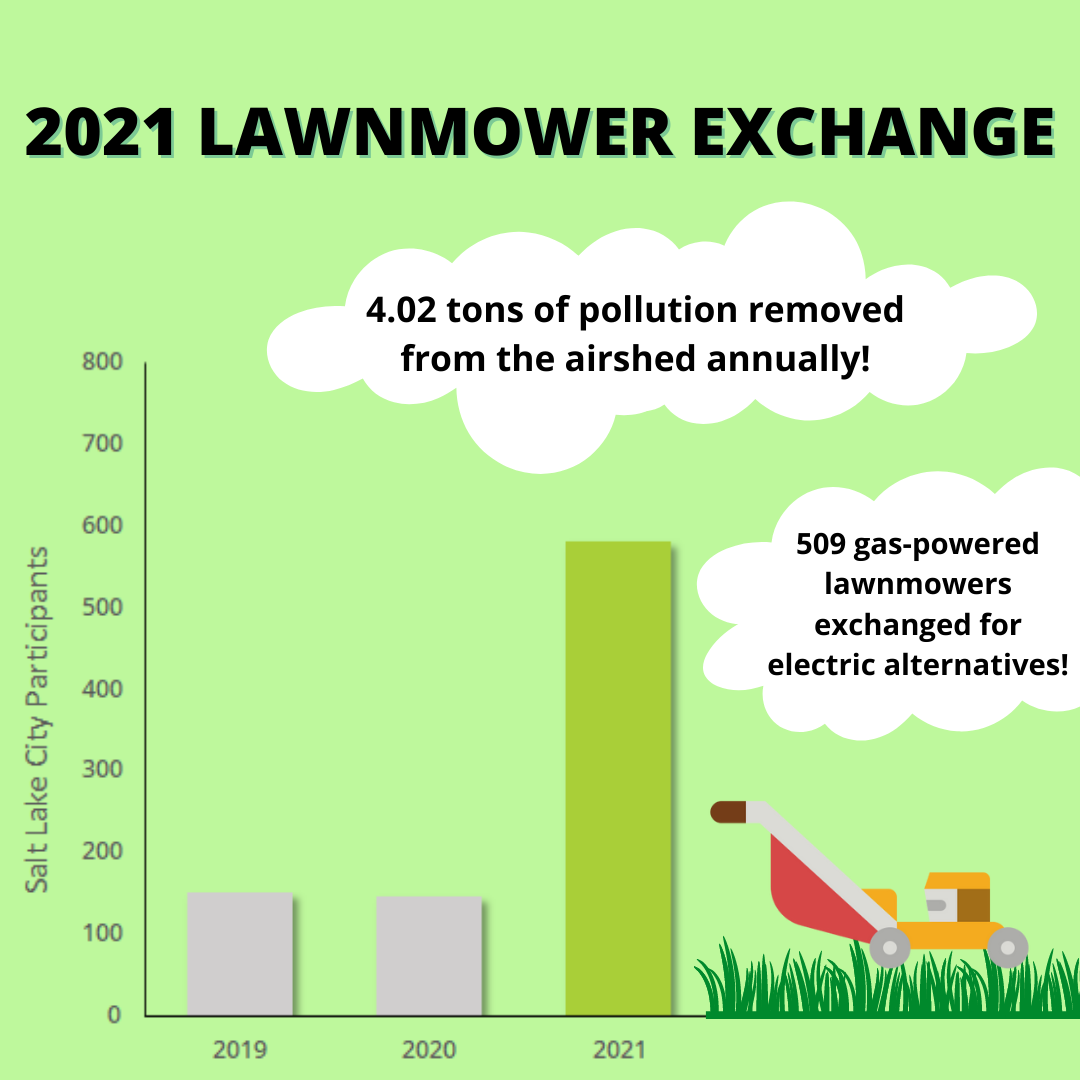
COMPLETE: Re-launch Tickets for Transit.
Array
(
[0] => image_bg
)
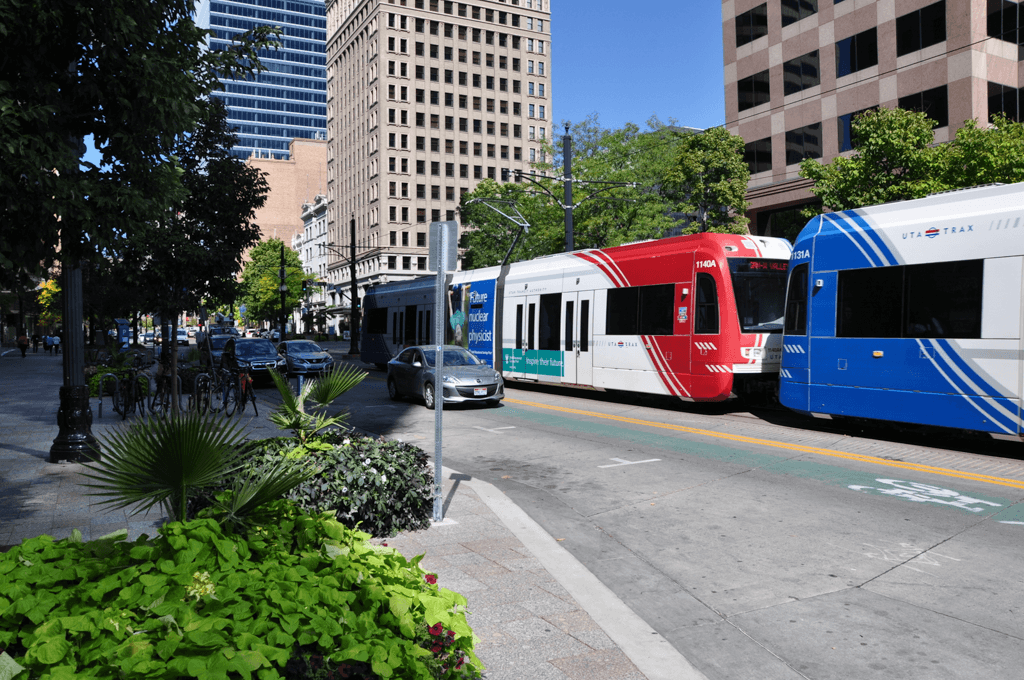
Array
(
[0] => description
)
Mayor Mendenhall’s goal is to support increased ridership on public transportation by providing “tickets for transit” for large sports, cultural, and religious events held in Salt Lake City. In 2020, the Administration partnered with the Church of Jesus Christ of Latter-Day Saints to initiate the first such event, whereby ticketholders for the General Conference in downtown SLC would receive a free ride on UTA services. Delayed due the pandemic, the Mayor is partnering with entities to relaunch the program once large-scale events return to the capital city.
On November 1st, 2021, the SLC Airport pilot program providing free UTA fares to the airport with a boarding pass launched. The program runs through January 2022. Read more here.
COMPLETE: Continue the Mayor’s 1,000 Trees initiative and continue efforts to start up the Urban Forestry Community Subcommittees.
Array
(
[0] => description
)
Mayor Mendenhall’s goal is to plant 1,000 trees in Salt Lake City’s Westside neighborhoods, over and above the 1,200 trees normally planted citywide by the City’s Division of Urban Forestry. Trees help clear the air, provide respite from hot summer temperatures, reduce the urban heat island effect, improve property values, trap stormwater runoff, and much more. The additional 1,000 trees planted annually have the potential to generate half a million pounds of new oxygen and take 20,000 pounds of pollution out of the air each year.
Array
(
[0] => description
)
IN PROGRESS: Track air pollution in a more localized way through Smart Cities innovations.
Array
(
[0] => description
)
Sustainability has partnered with the University of Utah on an air quality monitoring project where air quality sensors are installed on electric buses. This website or app will display data from this project in addition to other air quality data sources, such as sensors on Trax trains and regulatory monitors. Sustainability is also coordinating with Salt Lake County in an effort to develop on comprehensive website/app with localized air quality data and resources. The website/app is anticipated to be launched in summer 2022.
Array
(
[0] => description
)
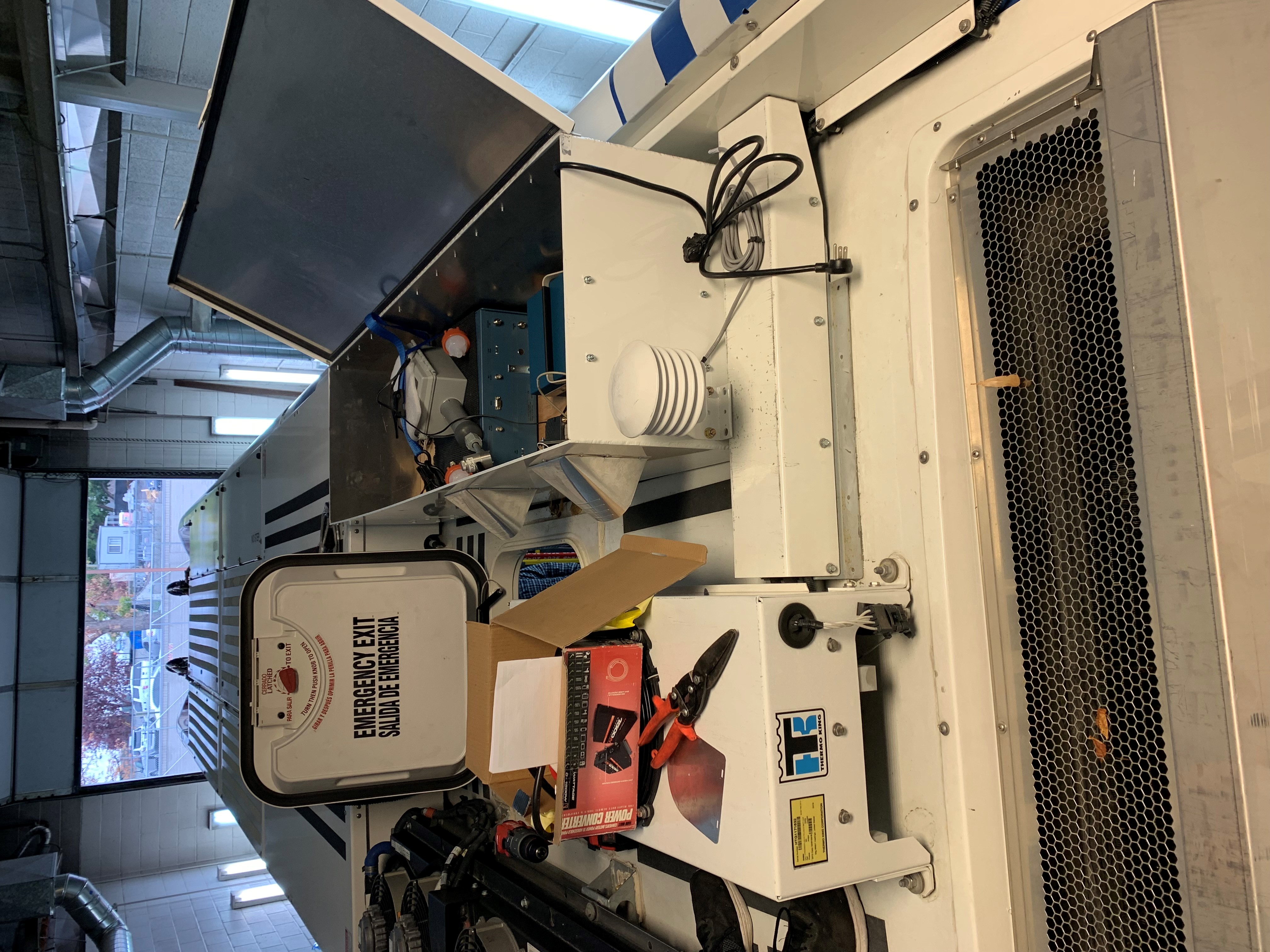
Additional Benchmarks from the Sustainability Department (not part of Mayor’s 2021 Plan)
IN PROGRESS: Reduce annual community greenhouse gas emissions 80% from 2009 baseline by 2040 Visualization:
Array
(
[0] => description
)
In 2016, Salt Lake City passed a joint Mayor-Council resolution to achieve an 80% reduction in community greenhouse gas emissions by 2040, compared to 2009 levels. Achieving this goal requires us to transition our electricity supply to net-100% clean electricity by 2030 or before. This goal is well underway with the creation of the Community Renewable Energy Agency that is working on behalf of over a dozen Utah communities to develop clean energy projects. Learn more at Utah100Communities.org
Other ongoing strategies to reduce carbon emissions include supporting the electrification of more buildings, vehicles, and appliances; providing active and public transportation solutions; reducing emissions from air travel, as well as the production of solid waste and wastewater; and more.
Array
(
[0] => embed
)
IN PROGRESS: Increase renewable electricity generation for City facilities to 100% by 2030
Array
(
[0] => description
)
In October 2021, Salt Lake City helped break ground on one of the largest solar farms that will be connected to Rocky Mountain Power’s Utah grid. The 80 Megawatt Elektron Solar Project is expected to supply over 90 percent of Salt Lake City government’s electricity needs when it comes online in 2023. It’s a collaboration among six large energy users (Salt Lake City, Park City, Summit County, Deer Valley, Park City Mountain, and Utah Valley University), Rocky Mountain Power, and renewable energy developers D.E. Shaw.
Prior to the Elektron project, Salt Lake City has prioritized on-site solar energy for its buildings for over ten years. The latest installation was a 115 kw system on the roof of the Sorenson Community Campus. The 360 panels generate 34 percent of the electricity the community center uses annually. The distributed solar at 17 SLC municipal sites, plus a 3 Megawatt subscription to Rocky Mountain Power’s Subscriber Solar program, delivered 14 percent of the City’s total municipal electricity consumption as of 2021.
Array
(
[0] => image_bg
)
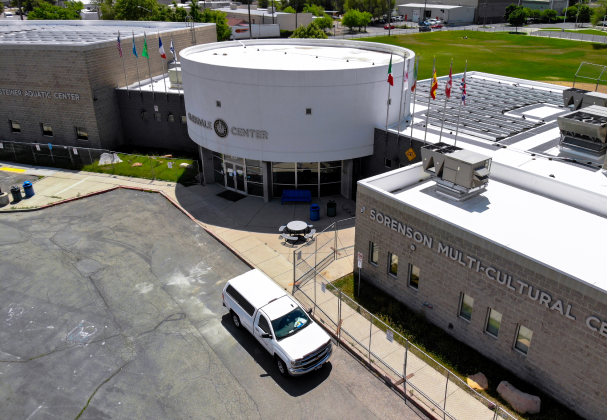
Array
(
[0] => image_bg
)
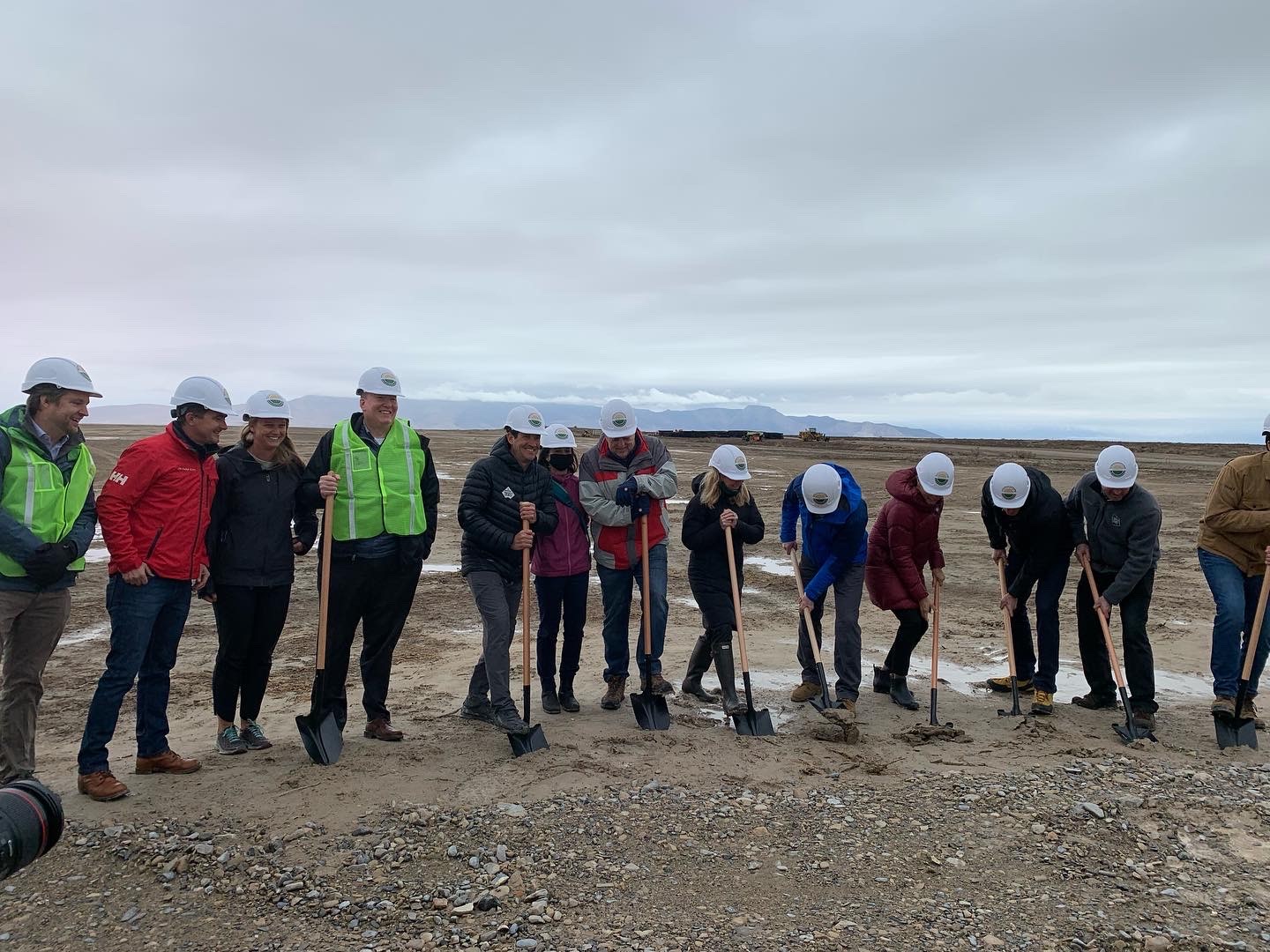
IN PROGRESS: Increase customer-sited solar energy installed throughout Salt Lake City
Array
(
[0] => title
[1] => description
)
Rooftop or distributed solar energy is an important contributor to our community clean energy portfolio. Salt Lake City has supported fair compensation for rooftop solar owners every time the reimbursement rate for net metering is threatened. Thankfully, the dramatic savings in solar panel cost, tax credits, and sustained community interest led to a significant growth in distributed solar installations in Salt Lake City over the last decade.
In 2021, Salt Lake City is also working on a bulk discount program for rooftop solar to help residents save money on the purchase of solar panels.
Array
(
[0] => embed
[1] => description
)
IN PROGRESS: Ensure commercial buildings greater than 25,000 square feet are benchmarking annual energy consumption and reporting data to Salt Lake City Sustainability Department
Array
(
[0] => description
)
Large buildings are a significant contributor to local air pollution, as well as our community carbon emissions. That’s why, in 2017, Salt Lake City passed the Energy Benchmarking and Transparency Ordinance. Most commercial buildings over 25,000 square feet must measure and report their annual electricity and natural gas usage through the EPA’s Portfolio Manager software to the City on an annual basis. Portfolio Manager will generate an Energy Star score with 50 being above average. Measuring energy use helps building owners and managers know if energy and cost savings can be realized. The City’s goal is to increase compliance with the ordinance, and increase the number of high-performing buildings over time.
Array
(
[0] => embed
[1] => title
)

